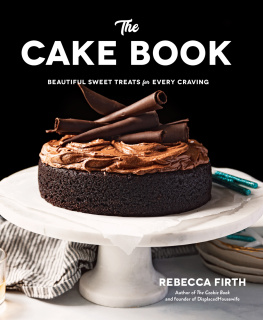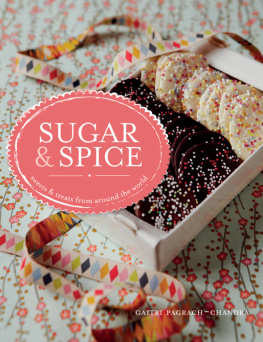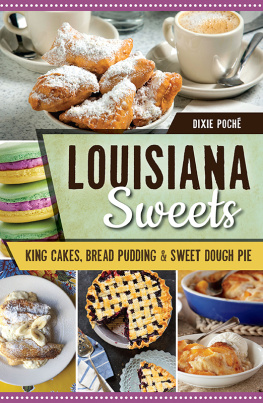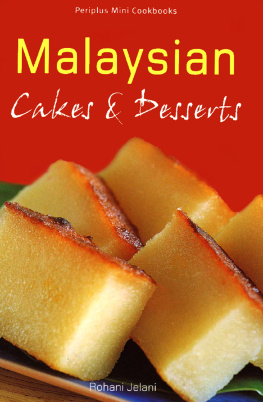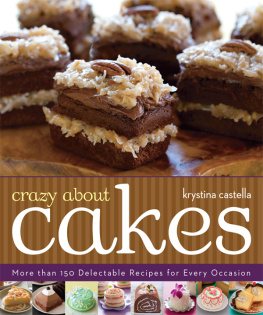A WORLD OF CAKE

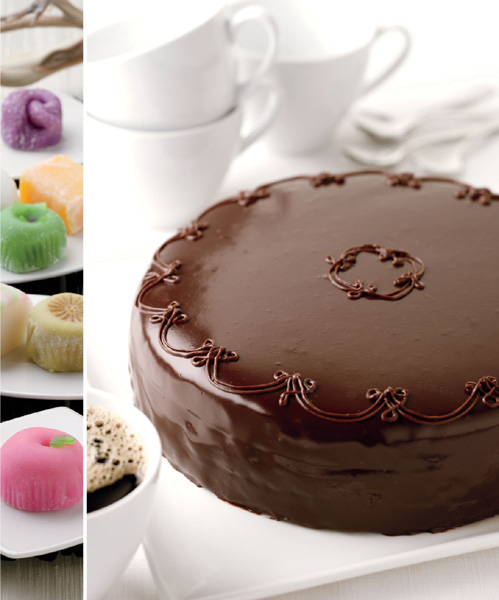
A WORLD OF
CAKE
150 Recipes for Sweet Traditions
FROM CULTURES NEAR AND FAR
Krystina Castella

The mission of Storey Publishing is to serve our customers by publishing practical information that encourages personal independence in harmony with the environment.
Edited by Margaret Sutherland and Nancy W. Ringer
Art direction and book design by Alethea Morrison
Text production by Jennifer Jepson Smith
Photography by Renee Anjanette Photography, except as noted on
Art direction, cake designs, and photo styling by Krystina Castella
Food styling by Sienna DeGovia
Pastry cheffing by Grace Cho and Larena Farreta
Maps by Jennifer Daniel
How-to illustrations by Alison Kolesar
Kanji symbols by StockKanji.com
Indexed by Christine Lindemer, Boston Road Communications
2010 by Krystina Castella
All rights reserved. No part of this book may be reproduced without written permission from the publisher, except by a reviewer who may quote brief passages or reproduce illustrations in a review with appropriate credits; nor may any part of this book be reproduced, stored in a retrieval system, or transmitted in any form or by any means electronic, mechanical, photocopying, recording, or other without written permission from the publisher.
The information in this book is true and complete to the best of our knowledge. All recommendations are made without guarantee on the part of the author or Storey Publishing. The author and publisher disclaim any liability in connection with the use of this information.
Storey books are available for special premium and promotional uses and for customized editions. For further information, please call 1-800-793-9396.
Storey Publishing
210 MASS MoCA Way
North Adams, MA 01247
www.storey.com
Printed in China by R.R. Donnelley
10 9 8 7 6 5 4 3 2 1
LIBRARY OF CONGRESS CATALOGING-IN-PUBLICATION DATA
Castella, Krystina.
A world of cake / by Krystina Castella.
p. cm.
Includes index.
ISBN 978-1-60342-576-6 (paper w/flaps : alk. paper)
1. Cake. 2. Desserts. 3. Cookery, International. I. Title.
TX771.C35 2010
641.8653dc22
2010020752
DEDICATION
For my incredible husband, Brian Boyl, who provides tremendous support on all of my baking adventures. Thanks!
ACKNOWLEDGMENTS
This book would not have been possible without the help of the cookbook librarians, pastry chefs, food historians, food enthusiasts, and international community of students at the college where I teach. All contributed ideas, recipe suggestions, and their opinions on the cakes I should taste and bake. I am so grateful for the global community of friends I made and the outpouring of generosity from people with a common goal the sharing of cake culture and all of the great traditions and feelings it represents.
A special thank-you to the team who brought this book to life: Margaret Sutherland, acquisitions editor; Pam Art, publisher; Alethea Morrison, art director; Nancy Ringer, editor; Jennifer Jepson Smith, production designer; Mars Vilaubi, photo editor; Rebecca Springer, copy editor; Renee Anjanette Kalmar, photographer; Joe Coonan, photo assistant; Sienna DeGovia, food stylist; Larena Faretta, pastry chef; Grace Cho, pastry chef; Emily Sandor, photographer; and Sarah Scheffel, editor.

INTRODUCTION
For the Love of Cake
YUMMMM THE SEDUCTIVE POWER OF CAKE. From East to West, primitive to progressive, most common to most avant-garde, cakes are good for the soul. They draw people together, enliven celebrations, and in one charming and blissful indulgence embody the rituals and histories of cultures around the world. The cakes we create in our own kitchens can transport us anywhere in place or time, from modern-day Tokyo to medieval England, from colonial Indonesia to ancient Egypt. At home we can tinker with recipes to modernize traditions, incorporate local ingredients, or personalize recipes to make them our own.
Cakes are rich with meaning and symbolism, inspired by the celebrations that surround them. As a curious cake lover, Ive always been interested in this crossover between cultural and culinary history. Why are fruitcakes traditionally made for Christmas, and why would my friends bring home a box of pineapple cakes from their trip to Taiwan? Why do Japanese street vendors in Brazil sell red bean cakes alongside the local favorites, corn cakes and pineapple pudium? I wanted to know, and I wanted to learn to choose the right (or perfectly inappropriate) cake for the occasion whatever the occasion. What could be a better way to learn about food history, cultural evolutions, religions, ingredients, and techniques than through baking some cakes? So I launched on my quest to explore the cakes of the world.
Questions aside, eating and celebrating are (usually) the primary focus when youre talking about cake, and cultures around the world are marvelously inventive in making scrumptious sweet treats that will just about knock your socks off. Learning to make these cakes is an adventure unto itself. If you enjoy learning new baking techniques, you must explore the simplest fried fritters from Africa and the elaborate marzipan rings of the Scandinavian kransekake. If you live for decorating, the artful French croquembouche, the unsettlingly realistic Austrian rehruecken, and the elaborate Canadian Yule log are food art at its best. If novelty is your aim, the signature cakes of cultures far and wide, from Scottish Dundee cake to Indian milk cakes to Australian frog cakes, provide a wondrous palette to choose from. And if youre a foodie looking for an excuse to celebrate with something new, the cake holidays of the world await, with plenty of recipes with which to astound your friends.
Through the course of collecting and reinventing recipes and writing this book, Ive found two common themes:
Cake traditions are alive, evolving every day. Mooncakes are traditionally eaten during the Chinese Midautumn Festival, when families climb a mountain for a better view of the moon. The festival is now celebrated in Chinatowns worldwide, with no mountain in sight but more mooncakes than you can feast your eyes on, with fillings ranging from the traditional bean pastes to ice cream and chocolate. The Twelfth Night cake, a traditional Catholic creation for the Epiphany, has evolved into the king cake, now enjoyed by the fun-loving, costumed (or half-naked) celebrants at Mardi Gras carnivals, from Venice to So Paulo to New Orleans.
Cakes are global, and cultures and customs are fusing. Rice cakes, common at tea ceremonies in Japan, can be found at Fourth of July picnics in New England and Bastille Day festivities in Paris. The American cupcake craze has spread to Dubai, along with Las Vegasstyle hotels. In India, American strawberry shortcakes and German Black Forest cakes are all the rage at birthdays. The croquembouche is just as much at home at a French wedding as it is at a Chinese-Jewish wedding. And Koreans still prepare saeng, a traditional celebration cake, for birthdays and holidays, but youll find it now topped with Western-style buttercream and, for Christmas, super-cutesy Santas, elves, and Christmas trees.
Next page

